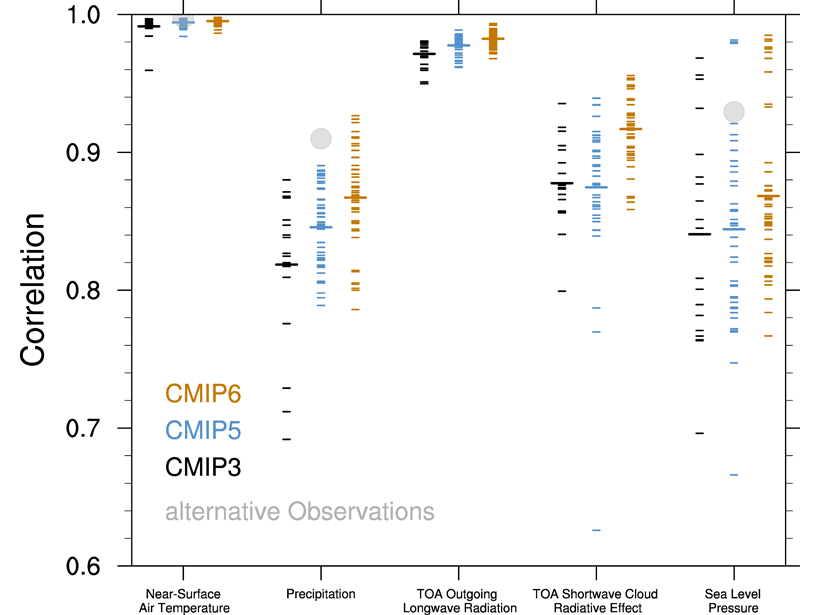Source: Journal of Geophysical Research: Atmospheres
Since the early 1990s, the Coupled Model Intercomparison Project (CMIP) has been using climate model simulations to better understand past, present, and future climate variability. Bock et al. [2020] contrast the performances of climate models in three phases – CMIP3, CMIP5, and the latest CMIP6 – which represent the time evolution of climate modeling in the past 15 years.
Temperature, water vapor, and zonal wind speed show improvements in CMIP6 with amplitudes of many long-standing biases smaller than CMIP3 and CMIP5. High-resolution models show significant improvements in their historical CMIP6 simulations for temperature and precipitation mean biases. A striking result is that the spread in effective climate sensitivity in CMIP6 models is larger than in previous phases. Results from CMIP6 will be used in the next assessment of past and future climate change by the Inter-governmental Panel for Climate Change (IPCC).
Citation: Bock, L., Lauer, A., Schlund, M., Barreiro, M., Bellouin, N., Jones, C., et al. [2020]. Quantifying progress across different CMIP phases with the ESMValTool. Journal of Geophysical Research: Atmospheres, 125, e2019JD032321. https://doi.org/10.1029/2019JD032321
—Minghua Zhang, Editor-in-Chief, JGR: Atmospheres
Text © 2021. The authors. CC BY-NC-ND 3.0
Except where otherwise noted, images are subject to copyright. Any reuse without express permission from the copyright owner is prohibited.

